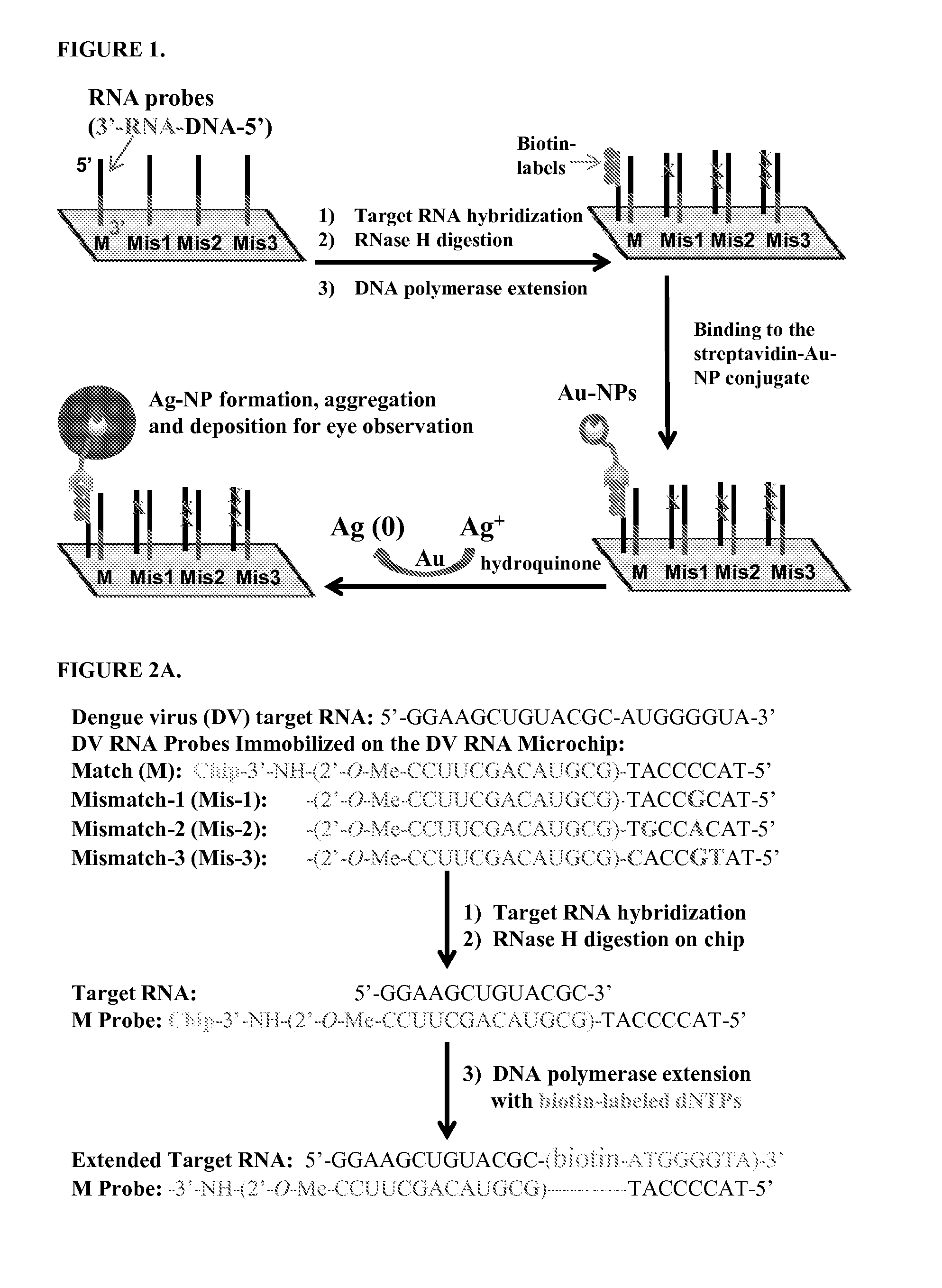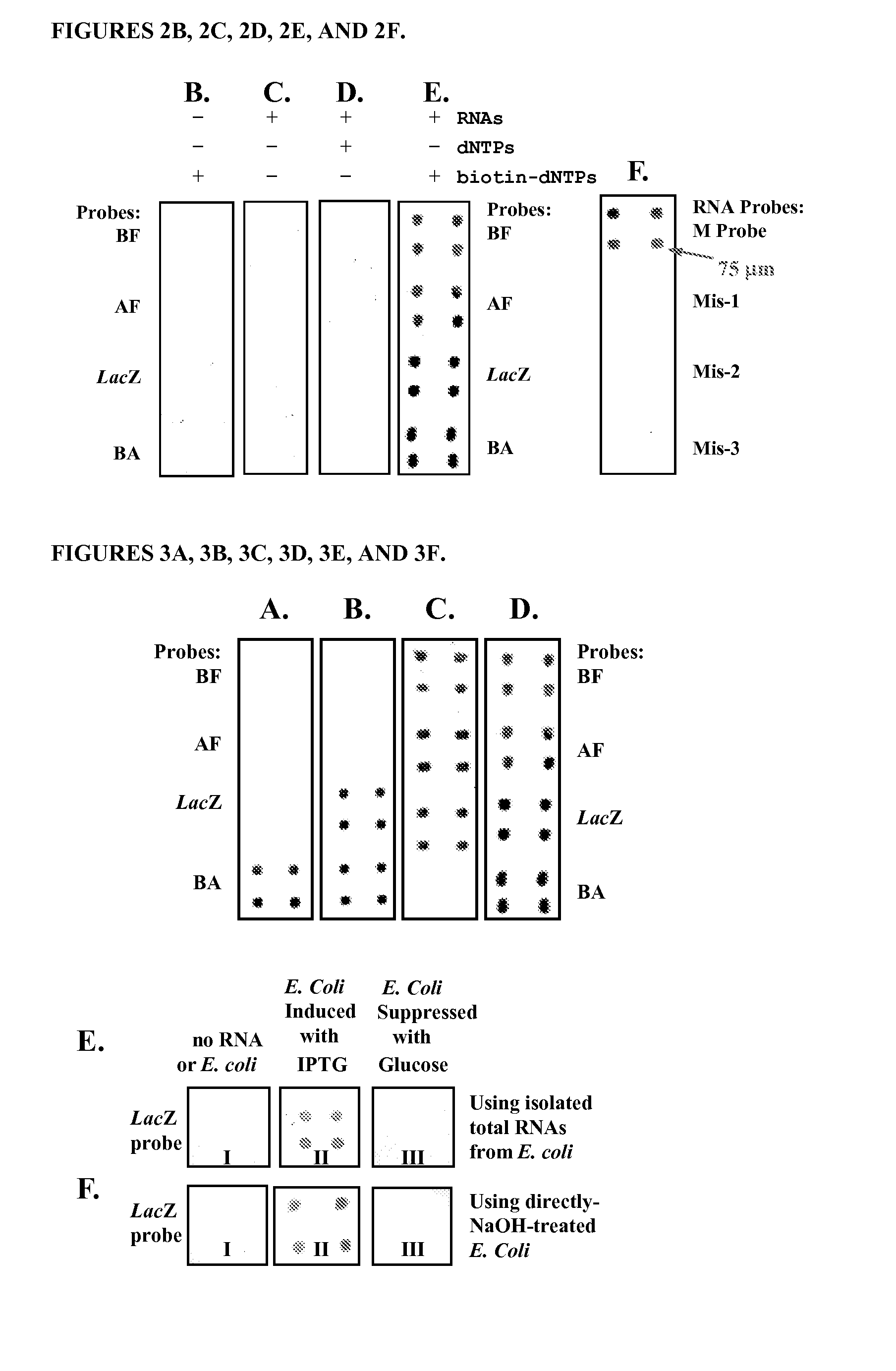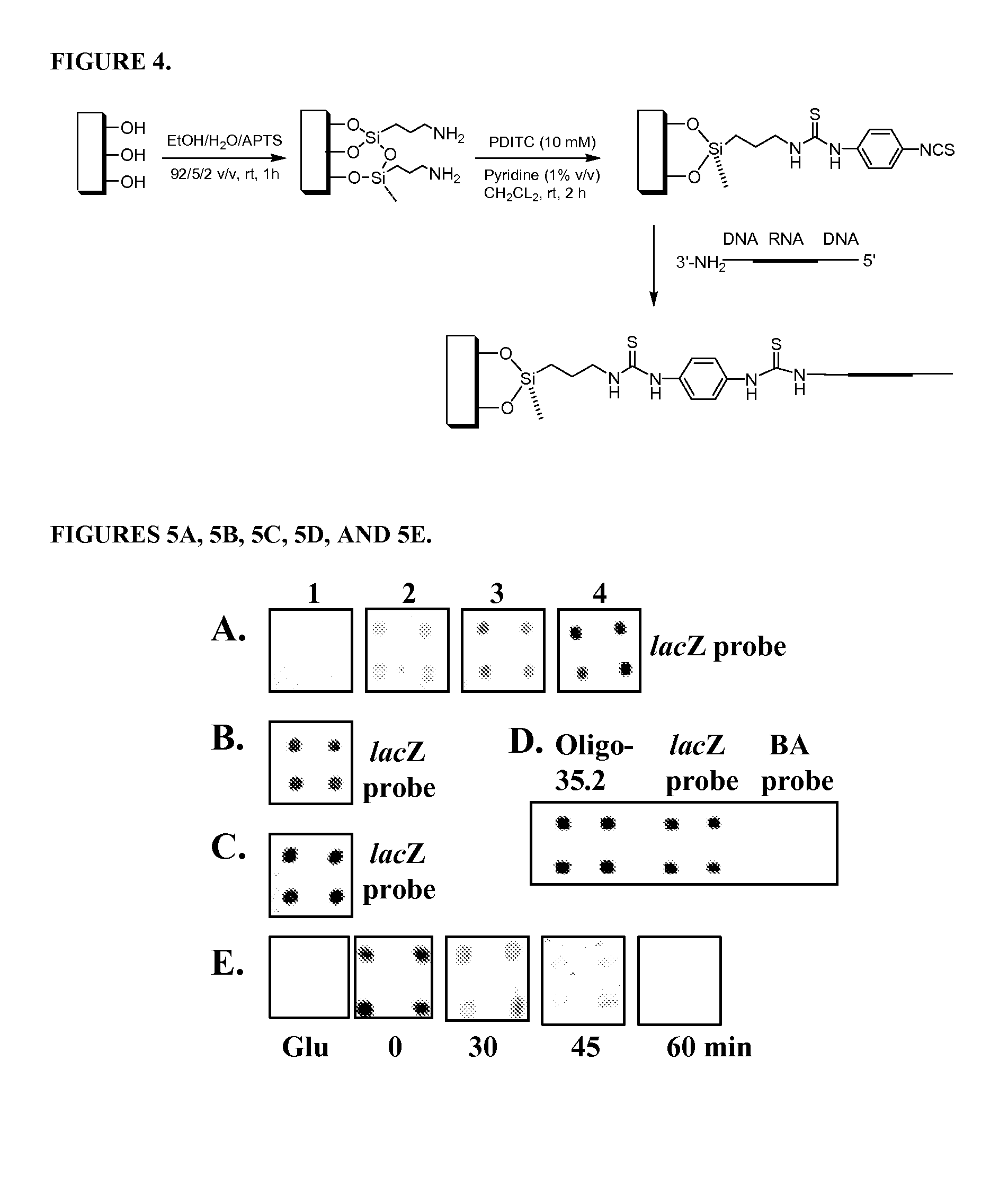RNA Microchip Detection Using Nanoparticle-Assisted Signal Amplification
a microchip and signal amplification technology, applied in the field of nucleic acid detection and analysis, can solve the problems of ineffective differentiation of antigen-antibody immunological assay, time-consuming culture-based methods, and inability to effectively differentiate, so as to increase the amount of second label at the site, increase the detection sensitivity, the effect of easy detection
- Summary
- Abstract
- Description
- Claims
- Application Information
AI Technical Summary
Benefits of technology
Problems solved by technology
Method used
Image
Examples
examples
[0122]A. RNA Microchip Detection Using Nanoparticle-Assisted Signal Amplification
[0123]This example describes an example of the disclosed RNA microchip used to directly detect RNA via direct visualization and nanoparticle-assisted signal amplification. This technology is simple and accurate and it can efficiently differentiate single-nucleotide difference. The RNA sample preparation is simple and can be accomplished in 5 min. The disclosed rapid RNA detection can be completed within 45 min (including sample preparation time) and have the detection sensitivity at the low fmole level. In addition, the detection signals can be observed by naked eye or with a magnifying glass. This approach is PCR-free, easy to perform and cost-effective. Moreover, the strategy does not require sophisticated equipment and can be used to help monitor disinfection treatment. The visual detection format and simplicity make this RNA microchip technology well suited for rapid and accurate detection of pathog...
PUM
| Property | Measurement | Unit |
|---|---|---|
| size | aaaaa | aaaaa |
| diameter | aaaaa | aaaaa |
| diameter | aaaaa | aaaaa |
Abstract
Description
Claims
Application Information
 Login to View More
Login to View More - R&D
- Intellectual Property
- Life Sciences
- Materials
- Tech Scout
- Unparalleled Data Quality
- Higher Quality Content
- 60% Fewer Hallucinations
Browse by: Latest US Patents, China's latest patents, Technical Efficacy Thesaurus, Application Domain, Technology Topic, Popular Technical Reports.
© 2025 PatSnap. All rights reserved.Legal|Privacy policy|Modern Slavery Act Transparency Statement|Sitemap|About US| Contact US: help@patsnap.com



